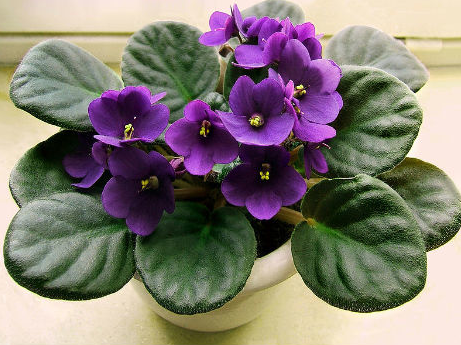It’s been a busy summer thus far for Belle Fiori with lots of weddings and events to prepare for, but we haven’t forgotten to spotlight a new plant of the month for you! July’s bloom of the month is the delicate African Violet. Personally, this is one of my favorite houseplants for a few reasons-the lovely shades and hues of purple they’re known for, the fact that they can bloom year-round, and that they make excellent gifts. In fact, I actually have one that i received from a relative over a year and a half ago which still blooms over and over again and continues to thrive. I simply water regularly and keep mine positioned on a bookshelf beneath a skylight in my hallway where it gets plenty of light. So, if you’re looking for a great shower, thank you, or any sort of gift, I highly recommend the violet! Check out the specifics…
July-African Violet
Description: Violets are small houseplants, ranging usually 2 to 4 inches tall and 6 to 8 inches wide (from the tip of one leaf to the tip of an opposite leaf). If properly cared for, they will bloom year-round; flowers vary from pinks and reds to purples and can be single, semidouble, or fully double.
Light: In winter, they prefer a sunny east or south window; in summer, a north or west window. Year-round fluorescent lighting or a sunny north window is also fine. Leaves may turn yellow or have holes burned into them by too much hot, direct sunlight. Too little sunlight leads to pale foliage and leaves that are too long.
Temperature: Violets prefer home temperatures between 60 – 80 F. Avoid hot or cold drafts.
Watering: Room temperature water is best. Keep the soil evenly moist (not soaked and not totally dried out). Use a cool-mist humidifier in winter months or group violets together in a dish with pebbles: fill the dish with water to just below (not touching) the base of the pot.
Trouble-shooting: African violets may suffer after being moved, but give them time and they will revive. If the violet doesn’t bloom every other month or so, conditions aren’t optimal and you may need to boost humidity, move it away from hot or cold drafts, or you may be over- or under-watering it. Pests can include cyclamen mites and mealybugs.

